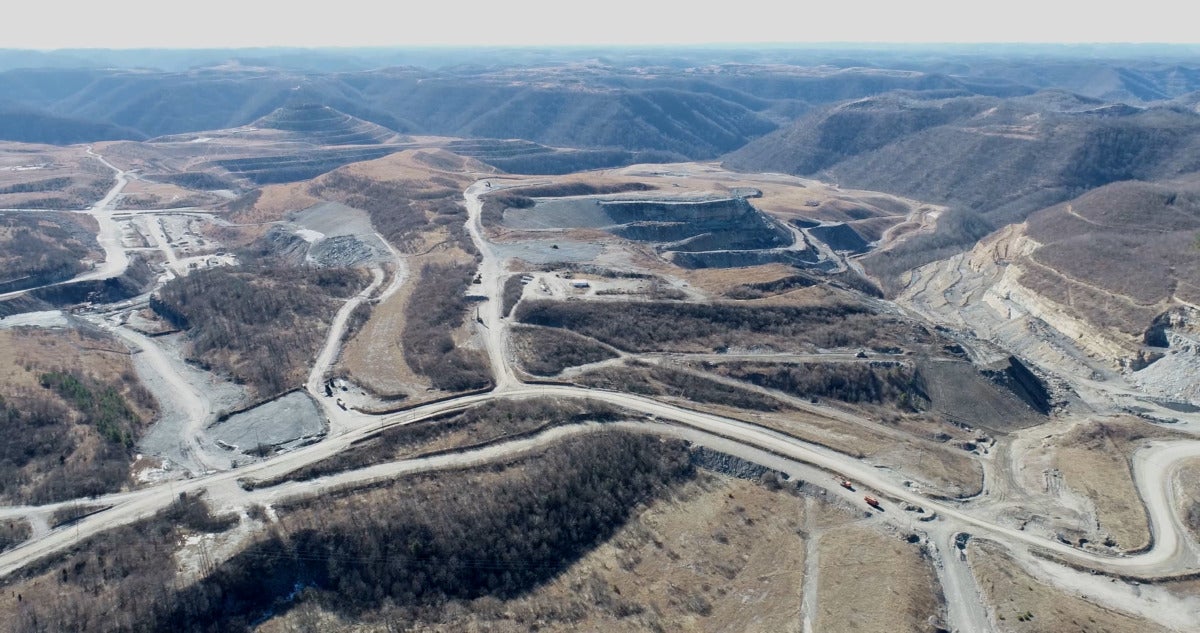
Mountaintop removal (MTR) – a colloquialism for surface coal mining – is visually striking. Observed from the air, MTR’s invasive spread across central Appalachia is staggering in its geologic, inhuman proportions. From the ground, MTR is disorienting, uncanny, hard to wrap your head around.
The ancient topography of the Appalachians prove chillingly malleable under the grind of global capitalism. Ammonium nitrate reduces mountains to rubble, exposing spidery seams of coal good for no more than a few years of extraction. Blasting sends carcinogenic silica dust skyward, left to settle in the lungs of West Virginians. Coal processing generates billions of gallons of toxic slurry, held tenuously in unlined earthen dams, risking catastrophic failure and deadly flooding. Coal combustion drives accumulations of atmospheric carbon, to cataclysmic ecological effects.
The work of unearthing coal – recruiting life forms long dead to the production of power and profit – involves a fundamental remaking of landscape; a violent repudiation of geological processes millennia in the making. This destruction, of course, is absolutely legal. MTR is fully permissible under state and federal law; environmental standards for the practice are not particularly stringent. Resisting coal extraction is arduous– even dangerous – in a context of corporate impunity and regulatory failure.
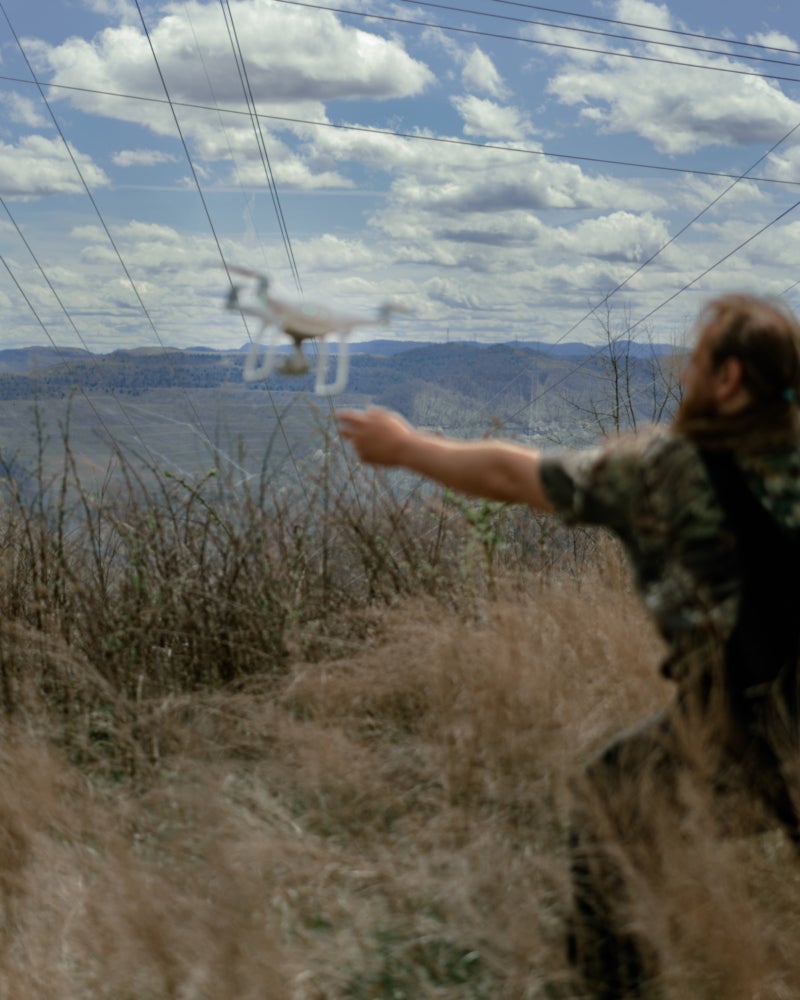
We – Elena, a writer, Will, a photographer, and Junior, an activist and filmmaker –set out in early spring to aerially monitor Twilight III (permit S502408), one mine in a sprawling complex owned and operated by Lexington Coal Company. Lexington Coal has recently amassed a healthy collection of fines as a result of operating in violation of their mining permits. If you look closely at the footage with a practiced eye, you’ll detect sediment control issues serious enough to warrant West Virginia DEP (Department of Environmental Protection) investigation. Junior has been doing this kind of filmmaking at MTR sites around his home in southern West Virginia for years. He’s been busy exposing corporate malfeasance via aerial monitoring, and has developed an extensive visual archive in the process. Will, meanwhile, trained his eye closer to the ground, making photographs of and around our drone filming.
The kind of looking you can do with a drone sometimes costs coal companies a lot of money, time, and labor. It is an attritional strategy: film a surface mine, identify a violation of company permits or state law, report to the DEP. Hope for a hefty fine, a pause in extraction, a revocation of permits. Film again, file another citizen complaint. Do it again and again, over and over, until the mining stops and the companies are held to account. We labor under no delusions about the scale of the problem, the impotence of environmental regulators, or the intricate webs of power and money that insulate coal companies from accountability. But we also understand that this is a long game, that a day without blasting is a good day, that a small fine is better than no fine. Junior films with his drone because this is shit that needs to be looked at. He films because no one else will.
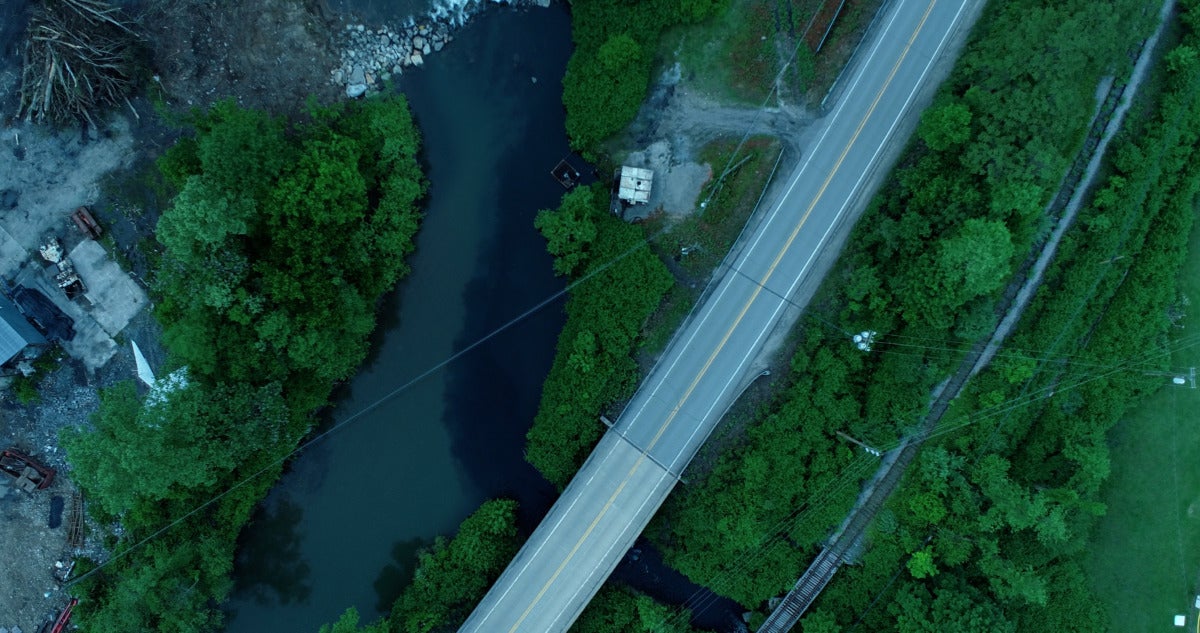
MTR functions through obfuscation. Its effects are at once abundantly obvious and just out of sight, obscured by steep mountainsides, armored guard stations, and private property boundaries. The systematic depopulation of these hollers– through buyouts and valley fills, toxic seepage and economic disinvestment –makes for fewer witnesses to the destruction. There is nothing subtle about the obliteration of mountains, but the details – the particularities of corporate malfeasance –are hidden from sight. Aerial monitoring is a way to stubbornly maintain a public gaze trained on the mines, to insist on transparency and accountability when it would otherwise be denied.
Junior films with his drone because this is shit that needs to be looked at.
Putting critical eyes on these mines makes companies uneasy. This fact hints at the power of opacity, but also at the fragility of coal mining as a viable enterprise. That aerial monitoring is received as a threat by companies and their supporters illuminates the true demands of the extractive machine: absolute impunity; unlimited rights to spoil.
There is a paradox here worth naming. While Junior’s aerial monitoring is a singular effort, there is no shortage of documentation in and around coal mines. Coal country has long held a potent draw for artists and journalists, generating an extensive archive of mine imagery.
This should not be surprising: MTR is visually spectacular and sensorially deranging. MTR is all about absence, the production of negative space, the generation of airy gaps where mountains once stood. Surface mines are perverse monuments to the ruthless, cannibalistic drive of capitalism; testaments to the boundlessness of corporate violence. Landscapes take on new meaning when their apparently static form proves ephemeral. Images of mountain landscapes in the age of extraction feel elegiac. There is much to photograph here.
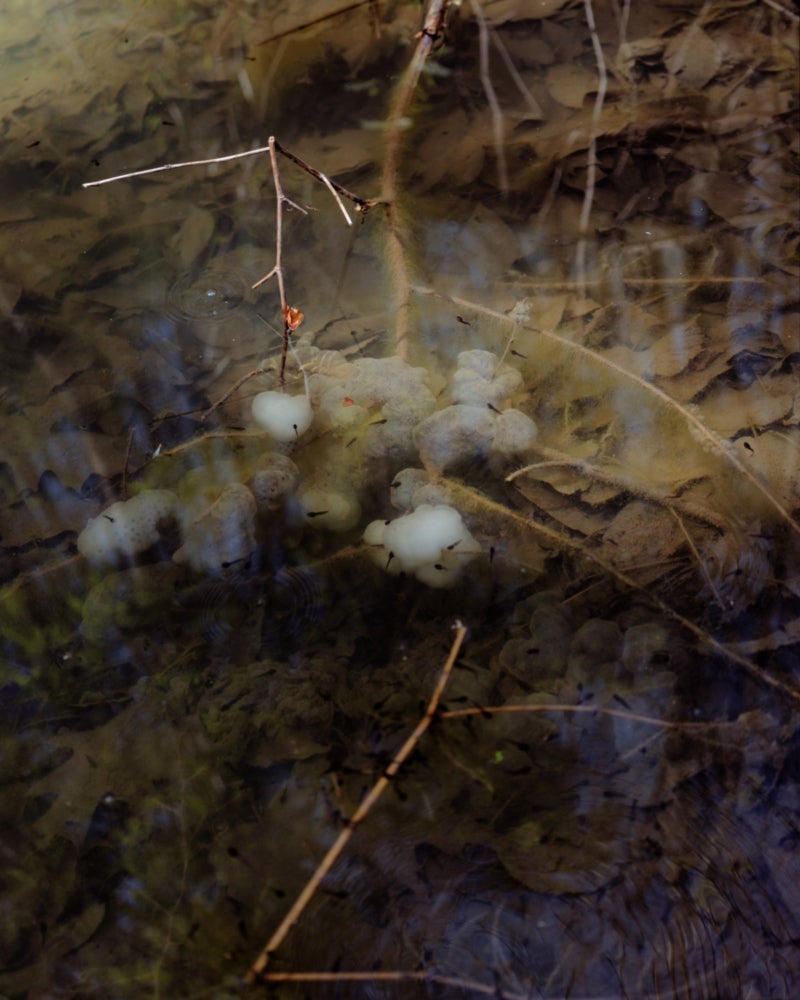
Photographs of the mines prove to be another lucrative export from coal country: this image making constitutes a kind of double extraction. This gaze is often invasive. These images are laden with divergent expectations, held to different ethical standards, and are granted a distinct objectivity. While drone footage is rejected as evidence in proceedings against coal companies, deemed prone to manipulation and therefore unreliable, artistic engagement with the mines is granted often unwarranted narrative authority. Any image making that happens here risks replicating the existing archive, occluding local expertise, and making a caricature of coal country and its inhabitants. Will is quite aware of this fact as he makes photographs. We wonder: how do all of these images of mines – some aesthetically driven, some strictly utilitarian –coexist, interact, and inflect one another with meaning? What kind of work can they – should they –do in the world? In combination, what kind of political and aesthetic force might they wield?
A state road cuts through a surface mine at White Oak, offering a rare instance of public access and an opportunity to immerse in the destructive force of MTR. To stand on a surface mine is uncanny and unnerving. It looks like the surface of the moon. It looks like an open wound. The scope and impact of MTR exceeds our perceptual and sensorial capacities. Even standing in the thick of things, the mine feels out of grasp: benign flatness and gentle slopes bely calculated destruction. Our bodies cannot process the scale: the sheer tonnage of earth and stone, the invasive sprawl of the mines. Aerial footage helps us make sense of things. The drone works as a kind of visual prosthesis, a bodily extension. And yet, such a lofty view – one that offers totalizing perspective and avenues for accountability – can’t convey the texture, the affective force, the minutiae of MTR. It’s worth getting close.
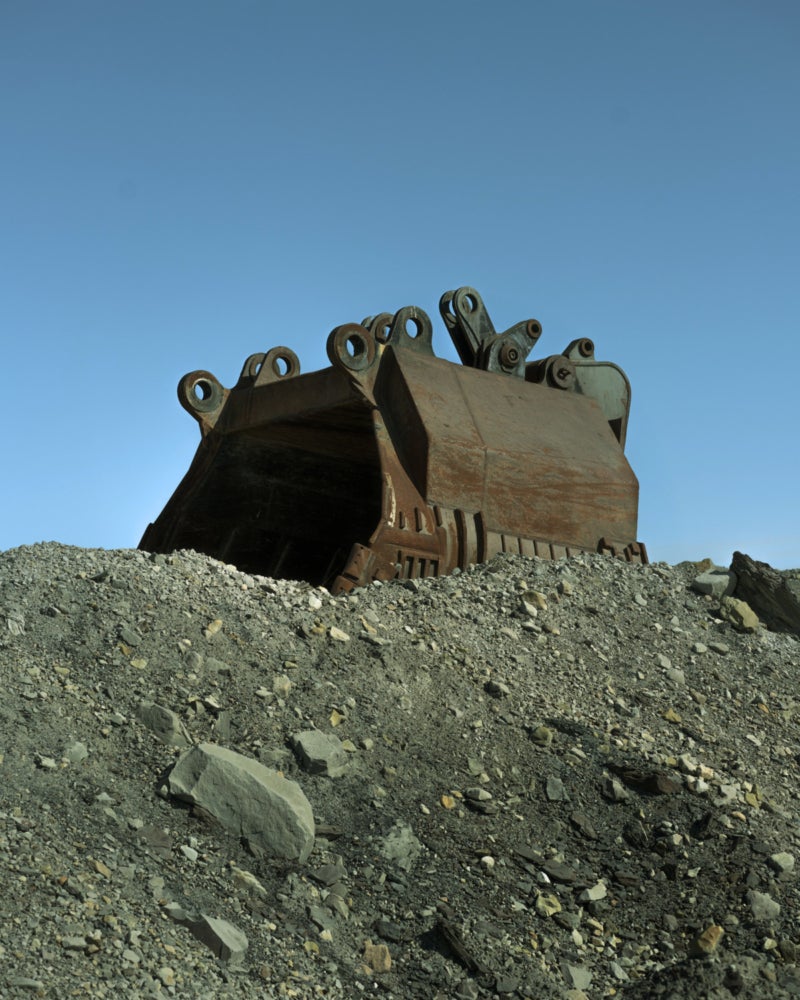
On the early Sunday morning of our visit, earth moving equipment lay still at White Oak. The hulking machines rested amid piles of rock and rubble, left to slumber on an unnatural plateau. We could imagine the grind and clamor of the mine, but – in the still quiet – we could also imagine its aftermath close at hand. Downslope from Twilight III’s denuded face, trilliums adorned the forest floor and ephemeral pools teemed with tadpoles. This era of MTR will ultimately be swallowed up in the sweep of geologic time; the destruction of these mountains naturalized as a strange feature of a strange era. But we’re concerned with the here and the now; with those of us living in the shadow of this violent enterprise, those breathing this toxic air, drinking toxic water, feeling the earth shudder with each shattering blast. Those strapped to the long aftermath of mining – of unstable retaining walls, unmitigated erosion, noxious runoff. We demand an end to extraction.
We hold our gaze steady.

This essay is part of our yearlong series Invasive Species.
Find out more about the three themes guiding the magazine’s publishing activities for the remainder of 2022 here.




